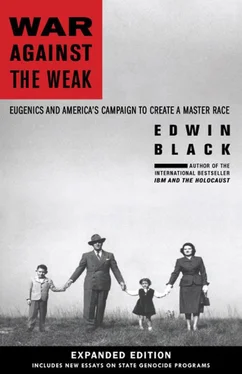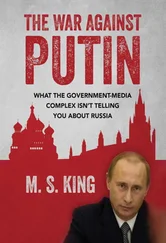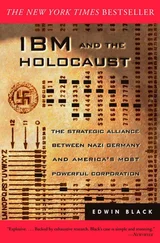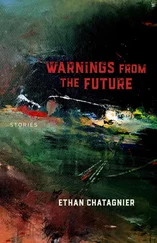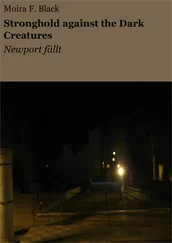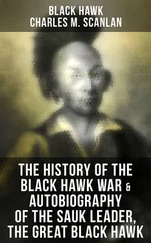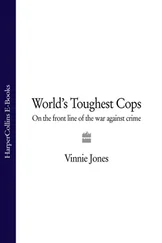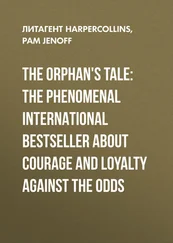Edwin Black - War Against the Weak
Здесь есть возможность читать онлайн «Edwin Black - War Against the Weak» весь текст электронной книги совершенно бесплатно (целиком полную версию без сокращений). В некоторых случаях можно слушать аудио, скачать через торрент в формате fb2 и присутствует краткое содержание. Город: Washington, DC, Год выпуска: 2012, ISBN: 2012, Издательство: Dialog Press, Жанр: История, на английском языке. Описание произведения, (предисловие) а так же отзывы посетителей доступны на портале библиотеки ЛибКат.
- Название:War Against the Weak
- Автор:
- Издательство:Dialog Press
- Жанр:
- Год:2012
- Город:Washington, DC
- ISBN:1-56858-258-7
- Рейтинг книги:3 / 5. Голосов: 2
-
Избранное:Добавить в избранное
- Отзывы:
-
Ваша оценка:
- 60
- 1
- 2
- 3
- 4
- 5
War Against the Weak: краткое содержание, описание и аннотация
Предлагаем к чтению аннотацию, описание, краткое содержание или предисловие (зависит от того, что написал сам автор книги «War Against the Weak»). Если вы не нашли необходимую информацию о книге — напишите в комментариях, мы постараемся отыскать её.
War Against the Weak — читать онлайн бесплатно полную книгу (весь текст) целиком
Ниже представлен текст книги, разбитый по страницам. Система сохранения места последней прочитанной страницы, позволяет с удобством читать онлайн бесплатно книгу «War Against the Weak», без необходимости каждый раз заново искать на чём Вы остановились. Поставьте закладку, и сможете в любой момент перейти на страницу, на которой закончили чтение.
Интервал:
Закладка:
The victims I encounter every day are as diverse as humankind. Jews, Native Americans, African Americans, Asian, Hispanic, the disabled, the Deaf, the medically abused, the terminally ill, subcontinental Indians, Peruvian indigenous tribes, Islamic women, Jamaicans, Gypsies, women pregnant with unwanted daughters, Appalachians, the poor, the undereducated, and many others. They are all united by one bond of horror. Each was subjected to or threatened with imposed efforts to eliminate their descendants from the face of the earth. To those in power, the victims looked wrong, spoke wrong, prayed wrong, lived wrong, dressed wrong, and in some cases were anathema not for anything they did but for what their progeny might do or represent many years later. The identification so many groups have made with the book’s historical narrative and explicit warning for the future has been a disheartening triumph. The landscape of the shattered families stretches beyond what one eye can see and any one consciousness can absorb.
War Against the Weak has been course-adopted as required reading by universities across the United States. Numerous filmmakers worldwide have incorporated the book into their productions, including a major, full-length documentary of the same name. War Against the Weak was honored by the World Affairs Council, Great Lakes chapter, with its International Human Rights Award. In 2010, the American Association of People with Disabilities presented me with the “Justice for All Award ” in a Congressional ceremony in recognition of this work. In 2011, I was recognized by the Institute for Moral Courage for the book. Later, in 2011, Congress called upon me for nonpartisan testimony on the subject in an effort to forefend future tragedies. One of my salient memories, also in 2011, was a book tour of North Carolina at the invitation of a coalition of elected state officials, universities, and communal organizations. At Winston-Salem State University, two auditoriums, linked by live global streaming, assembled to hear long-sought answers about the devastation wrought upon so many diverse families connected forever by this injustice. My annual lecture schedule includes scores of venues worldwide on eugenics and its implications, continuous media appearances, and regular interviews with high school students who select the subject for their History Day competition.
Among the many impossible challenges this topic presents to an author is the impossibility of comprehensiveness. Despite more than 600 pages, with some ninety pages of four-point footnotes and references, I could have written twenty volumes. Each of my twenty-one chapters could have easily provided enough material for a full book. My long row of file cabinets, stuffed with thousands of pages of archival and period materials, is yearning to be published. The saga of each state and ethnic group could each fill a separate book. It will be years before scholars have gone deep enough. Having left out 90 percent of everything I discovered a decade earlier, I was determined to add some new material from my files in this expanded edition. The new material should only be read after the main book chapters.
In this Appendix, two states are briefly illuminated with essays: Connecticut and North Carolina. Of the dozens of egregious cases, these two each carry their own unforgettable and linked story.
Ethnic Cleansing in Connecticut
Hitler and his henchmen victimized an entire continent and exterminated millions in his quest for a so-called “master race.”
But the concept of a white, blond-haired, blue-eyed master Nordic race was not Hitler’s. The idea was created in the United States and largely cultivated in Connecticut, two to three decades before Hitler came to power. The State of Connecticut played an important, largely unknown, role in America’s campaign of ethnic cleansing. What’s more, Connecticut was a pivotal engine in this country’s eugenic nexus with Nazi Germany.
In 1909, Connecticut became the fourth state to adopt eugenic laws such as forced sterilization, building on the state’s 1895 marriage-restriction law and the 1907 Indiana sterilization statute. Connecticut’s sterilization-enabling law, short on text, was vague enough to allow ordinary staffers at two state hospitals for the insane, one at Middletown and one at Norwich, to just scrutinize a patient’s family tree in deciding whether the patient would be sterilized. The number of those actually sterilized was small, just about three per one hundred thousand citizens. But, the state’s impact on policy far exceeded its numbers. Indeed, in 1919, as mass-sterilization programs were contemplated for Connecticut residents, the surgical authority was expanded from the two designated sterilizing institutions to include the Mansfield State Training School and Hospital at Mansfield Depot. The 350-acre Mansfield facility was established to be a great processing center—but it never implemented some of its darker designs.
Eugenics coercively sterilized some sixty thousand Americans, barred the marriage of untold thousands, forcibly segregated many tens of thousands in “colonies,” and persecuted vast numbers of Americans in ways the world is still learning. In Connecticut, only 550–600 persons were forcibly sterilized, but hundreds of thousands more were slated for the coercive surgery before the plan was abandoned.
Eugenics would have been so much bizarre parlor talk had it not been for massive financing by corporate philanthropies, specifically the Carnegie Institution, the Rockefeller Foundation, and the Harriman railroad estate. They were in league with America’s most respected scientists hailing from such prestigious universities as Yale, Harvard, and Princeton. These academicians faked and twisted data to serve the racist aims of American eugenics. They considered Connecticut both an early epicenter for eugenic propaganda and a later test case for full-scale ethnic cleansing.
The Carnegie Institution literally invented the American movement by establishing a laboratory complex at Cold Spring Harbor on Long Island. This complex stockpiled millions of index cards on ordinary Americans of color, ethnicity, and economic disadvantage. The movement’s purpose: carefully plot the removal of entire families, full bloodlines, and indeed whole peoples.
Devotion to eugenics swelled with special fervor in Connecticut. Much of the spiritual guidance and political agitation for the American movement came from the American Eugenics Society (AES), based in New Haven, and its affiliate the Eugenics Research Association, based in Long Island. These organizations, which functioned as part of a closely-knit network, published racist eugenic newsletters and pseudoscientific journals, such as Eugenical News and Eugenics, and propagandized for the Nazis. While the AES was at all times a national eugenic organization, it was commonly dominated by Connecticut eugenicists. So, the state’s role was magnified.
In the late nineteenth century, prestigious local physicians, such as Dr. Henry M. Knight, his son Dr. George Knight, and other Knight family members in the medical profession, laid the foundation for the twentieth-century eugenics movement that would emerge. In 1858, the elder Henry Knight had helped found the Connecticut School for Imbeciles, arguing against wasting time and money educating the “students.” The Knights were among the earliest proponents of confinement colonies to forcibly incarcerate the so-called “feebleminded,” a never-defined, supposed mental class. They led the way in establishing the state’s epileptic asylum and then lobbied energetically to pass “An Act Concerning Crimes and Punishments,” which criminalized marriage for people with various disabilities. Through the efforts of such medical advocates as the Knight family, Connecticut passed its sterilization law in 1909, not in the name of bias but in the name of science.
Читать дальшеИнтервал:
Закладка:
Похожие книги на «War Against the Weak»
Представляем Вашему вниманию похожие книги на «War Against the Weak» списком для выбора. Мы отобрали схожую по названию и смыслу литературу в надежде предоставить читателям больше вариантов отыскать новые, интересные, ещё непрочитанные произведения.
Обсуждение, отзывы о книге «War Against the Weak» и просто собственные мнения читателей. Оставьте ваши комментарии, напишите, что Вы думаете о произведении, его смысле или главных героях. Укажите что конкретно понравилось, а что нет, и почему Вы так считаете.
